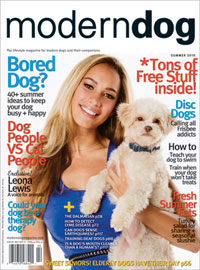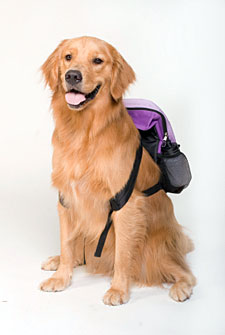

As seen in Modern Dog Magazine


Pet Safety Tips for Flying

Pets Taking to Flight:
It is important to realize that not all airlines are pet friendly.These are the following means of air transport for a pet:
Pet Policies As Cargo:
If the pet travels as cargo, the cost is based on the weight/size of the pet in its crate.Federal guidelines define the proper size requirements for your pet's travel crate. Pets can be refused upon check-in, due to improper type and fit of crate; improper documentation; the flight connection is too tight of a time frame, too long of a layover or the number of connections. Refusal can also be due to improper check-in or weather restrictions (too hot, too cold) Typically, a pet flight cannot have more than one connection.
Other reasons include that the pet appears to be ill, sedated, or shows aggression. Pets may not fly under the age of eight weeks.
Pet Airline Tickets:
Pet airline tickets are paid for at the time they are checked in at the airport as animal cargo/animal freight and tickets cost less if the pet is on the same flight as the guardian.
Health Requirements:
Pet travel requires a current vet check to ensure your animal is in good health. International pet travel requirements for vary greatly and require much advance planning
Pet Cargo and Regulations on the Aircraft:
- Pet cargo area separated from luggage and all other goods
- Families and/species of animals are grouped when possible -- dogs by dogs, cats are by cats, birds by birds
- All mechanical and moving parts in the designated animal cargo area must be in perfect condition for any pet to fly on an airliner
- Controlled climate and temperature (within 10 degrees of cabin temperature)
- Ample oxygen for each pet in the designated area
Airlines must meet the following requirements for pets to travel on the aircraft
Precautions When Shipping Your Pet(s):
- Do NOT sedate your pet! Most airlines WILL NOT accept and ship a sedated animal.
- No feeding your pet immediately prior to the flight.
- Provide proper pre-flight exercise for your dog prior to the trip.
- Do not use a carrier with damaged or cracked plastic/ missing bolts/hardware.
- Make sure carrier is USDA/IATA approved for your pet.
- Make sure to have up-to-date contact information on your shipping sheet.
- Precondition your pet prior to the airline travel by letting them spend time in their travel crate/carrier.
- Keep your pet calm before, during and after the flight.
- Ensure your pet is healthy and is seen by his/her vet prior to the travel. This is required by the airlines. If a pet is on medications for a condition, be sure the pet is well-stabilized before air travel.
- Geriatric pets do fine as long as they in good health and have very comfortable bedding in their crate.
- Water is essential before, during, and after the flight for hydration. You may want to think about using hydration gels.
- Do not place hard objects in your animalís travel carrier/crate.
- Allow sufficient time to arrive at the airport. If you are late checking in the airline can refuse to accept your pet.